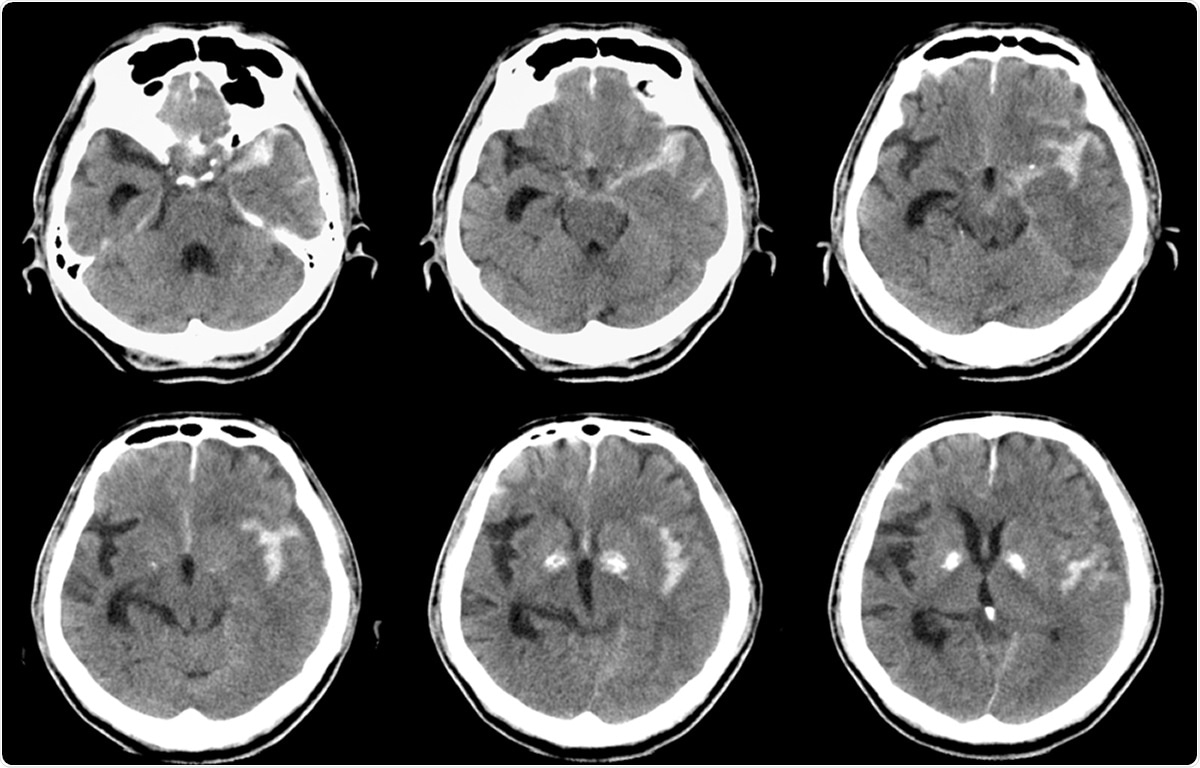A new study out of Finland shows that those who smoke are at a greater risk of developing bleeding within their brains called subarachnoid hemorrhage (SAH). SAH is a form of stroke that can be life-threatening. The study titled "Smoking Causes Fatal Subarachnoid Hemorrhage A Case-Control Study of Finnish Twins" is published in the journal Stroke, a journal of the American Stroke Association.

Computed tomography (CT) of brain : Left SAH (Subarachnoid hemorrhage). Image Credit: MossStudio / Shutterstock
What has been done before?
A decade ago, in a Nordic Twin Cohort study involving 79,664 twins from Denmark, Finland, and Sweden, researchers looked at risk factors of SAH other than genes. Since twins share their genetic makeup, the study could analyze other environmental factors that could influence the risk of SAH. This study had shown that non-genetic factors mainly determine SAH. However, this study did not reveal the extent to which environmental factors could influence the risk of SAH in individuals.
What was this study about?
Since the Nordic Twin Cohort study showed a non-genetic influence on SAH risk, this was an attempt to look at the risk factor smoking and its influence on SAH risk. The authors wrote, "If true, such finding would suggest that smoking causes SAH." This was a study on 32564 twin siblings to check why only one of the siblings experience fatal SAH. They hypothesized smoking could be one of the critical risk factors for SAH.
What was done?
For this study, the team included 16,282 same-sex Finnish twin pairs. There were a total of a total 32,564 individuals. They belonged to the older Finnish Twin Cohort between 1976 and 2018 and were closely followed. The team searched the records to check all participants who died from SAH. From all the data on health and habits of the participants, the team gathered information on smoking habits, alcohol use (daily consumption categorized per 10 g of alcohol), and regular physical activity, presence of high blood pressure, body mass index, and level of education (years of schooling). The smoker status was defined as "never, occasional, former, and current." The smoking status was finally classified as smokers (occasional and current) and non-smokers (never and former). Those that were current smokers were further classified according to the number of cigarettes per day.
The twins were classified as monozygotic (identical) or dizygotic (non-identical) twins or those of unknown zygosity. They checked all the siblings who had died of SAH with the other twin who had not died. They assessed the hazard ratio of the individuals from the entire participant group and also assessed pairwise when one of the pair had died of SAH. When one of the siblings died, it was called a discordant pair. Concordant twin pairs were those where both twin siblings had died due to SAH.
What was found?
The study involved a total of 869,469 person-years of follow-up. From this, a total of 116 discordant and 2 concordant twin pairs were identified. A total of 25 of the discordant twin pairs were monozygotic or identical twins.
Results revealed that smoking (occasional/current) status was associated with increased risk of SAH and death due to SAH compared to non-smokers (never/former). The Hazard ratio was 3.33 [CI, 2.24–4.95]. The team wrote, "Both heavy (HR, 3.01 [CI, 1.58–5.73]) and moderate smokers (HR, 3.98 [CI, 2.44–6.49]) had a slightly higher risk than light smokers (HR, 2.83 [CI, 1.64–4.9])."
Among the discordant twins, the twin who smoked had a raised risk of death due to SAH compared with the nonsmoking twin. The hazard ratio was 6.33 [CI, 1.87–21.4]. The team writes, "The association remained consistent regardless of the twin pairs' zygosity or sex."
There was also a raised risk of deaths due to SAH among those who consumed over 21g of alcohol per day (HR, 3.17 [0.43–23.3]).
Conclusions and implications
The team says that this study provides strong evidence that there may be a "causal" relationship between smoking and deaths due to SAH.
The corresponding author of the study Ilari Rautalin, a Ph.D. student at the University of Helsinki in Finland, said in a statement, "Our study provides further evidence about the link between smoking and bleeding in the brain."
Rose Marie Robertson, the American Heart Association's deputy chief science and medical officer and co-director of the AHA Tobacco Center for Regulatory Science, said in her statement, "This long-term study in twins helps to confirm the link between subarachnoid hemorrhage and smoking. Not smoking or quitting if you've already started, is an essential component of primary prevention." She was not involved in this study.